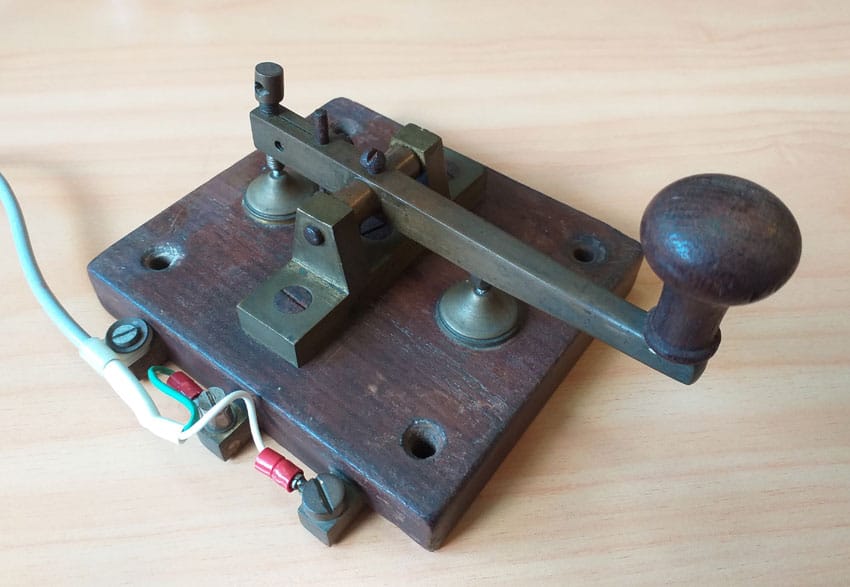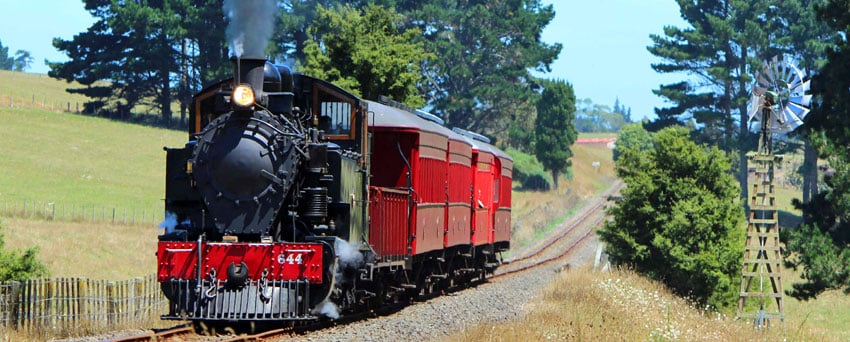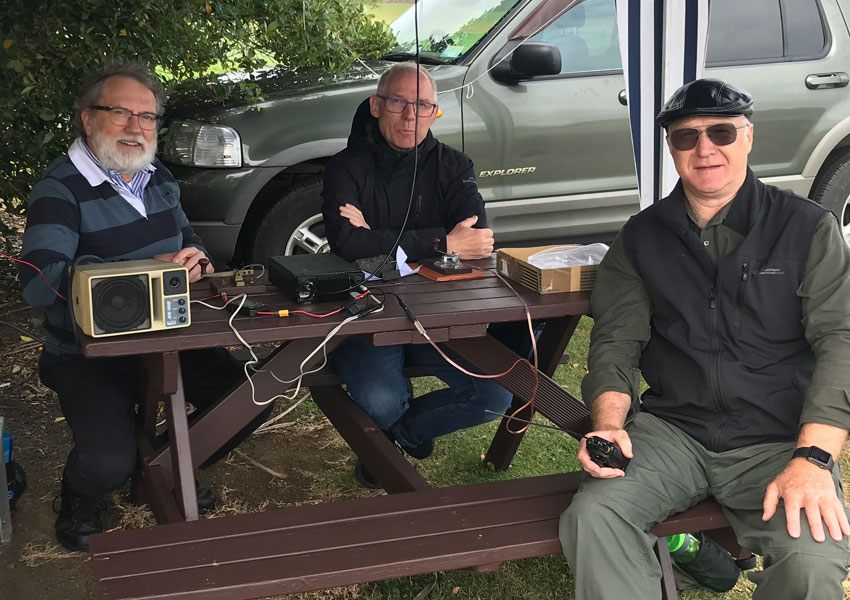This is a free fortnightly newsletter about the New Zealand Net, which meets daily at 2100 NZT on 3535 kHz.
If you would like to be notified by email when a new edition is published, please contact ZL1NZ.
Browse our Newsletter Archive and List of Net Tips.
Featured key

Photo: ZL1NZ
This landline Morse key is inscribed “SIEMENS BROTHERS & Co” and I think it dates from the late 19th century.
Siemens Brothers was based in London and this type of key was sent to Australia for their landline telegraph system. Later, the Australian Post Office produced copies of these keys locally.
It has a lovely crisp action with a satisfying click. No sidetone needed!
Look closely, and see if you can spot this key later in this edition of NZ Net News.
* If you have an interesting key for this feature, please send a nice clear photo and a few words describing it.
IMPORTANT: NZ Net moving to 40 metres
 It’s summer and we’re dealing with the limits of 80-metre propagation during extended hours of daylight. In particular, we have almost lost the trans-Tasman circuit at 2100 hours NZDT.
It’s summer and we’re dealing with the limits of 80-metre propagation during extended hours of daylight. In particular, we have almost lost the trans-Tasman circuit at 2100 hours NZDT.
As a result, the Net Controllers have agreed to shift the net to 7030 kHz for two weeks, starting Saturday 9 November.
Please let us know how this works for you so we can decide whether to continue on that freq until NZ changes back to standard time in April. That decision will be announced in the next NZ Net News.
We all know that 40 metres is a much busier band than 80, and we cannot be sure that 7030 will always be available to us. If you don’t hear the net on 7030 please tune higher until you find it. And please be sure to zero-beat NCS.
Thanks everyone for being flexible. See you on 40 metres.
Photo flashback

SAG Göteborg Radio
You might be wondering about all those tiny rectangular objects above the two Super Pro receivers at SAG Göteborg Radio. Each one showed the callsign of a ship and they were illuminated when SAG had traffic for the particular vessel.
Free telegram service for railroad passengers

Photo: Glenbrook Vintage Railway
On Saturday 26 October, the first day of the long Labour Day weekend, passengers on the Glenbrook Vintage Railway steam train service between Glenbrook and Waiuku were offered a special treat: they could send a telegram from either station, to be collected at the other station.
The project was organised by NZ Net member Peter ZL1PX with the support of the Franklin Amateur Radio Club. Additional operators were recruited, including NZ Net members ZL1AJY and ZL1NZ.

Operators are standing by. L-R: ZL1NZ, ZL1MDE and ZL1TZP at Glenbrook Station
Before boarding the train, a passenger could dictate a short message to one of the amateur radio volunteers who would record it on a telegram form. A CW operator would then call up the station at the other end of the line and send the message. The message number was recorded on a small docket given to the “customer” to make it easy to claim their message.
As an example, one family with two small children sent a message thanking the children’s grandparents for coming to visit from the USA. What a nice souvenir for “Papa” and “Nan” to take home with them.

ZL1AJY receiving and ZL1PX sending, at Waiuku Station
 The seven-kilometre radio link was provided by a pair of IC-290A multi-mode transceivers, operating on 144.200 MHz. Aerials were simple mobile whips. For authenticity, straight keys were used.
The seven-kilometre radio link was provided by a pair of IC-290A multi-mode transceivers, operating on 144.200 MHz. Aerials were simple mobile whips. For authenticity, straight keys were used.
The only real problem was the weather! The forecast for the day was “windy with 100% chance of rain”. Although the rain didn’t arrive until after the event had finished (thank goodness) the winds were very strong, and the forecast must have persuaded a lot of people not to attend what is traditionally a very busy day at the railway.
At Glenbrook, the hams were set up at a picnic table under a gazebo, which threated to become airborne several times. The operators at Waiku enjoyed the relative comfort of being in a small shed.
“It was tough about the weather,” says ZL1PX. “However, the event worked better than expected. People liked hearing Morse tones. They enjoyed creating a telegram. We will be keeping this activity in our menu.”

Martin ZL1MDE transmits a message from Glenbrook Station, while Steve ZL1TZP helps prevent the telegram from getting blown away.
Net numbers

NR52 R ZL1NZ 51/48 AUCKLAND 0800Z 1NOV24 = NZ NET = OCT QNI VK3DRQ 22 VK4PN 16 ZL1AJY 8 ZL1ANY 22 ZL1AYN 17 ZL1BDS 14 ZL1GQ 1 ZL1NZ 28 ZL1PX 19 ZL2EF 1 ZL2GD 17 ZL2GVA 6 ZL2KE 10 ZL2LN 5 ZL2TE 14 ZL2WT 6 ZL3TK 8 ZL4BDG 5 ZL4GW 12 ZL4KX 17 ZL4LDY 12 TOTAL 260 QTC 23 = ZL1NZ
Whiritoa is ham’s home away from home

Looking southeast from Whiritoa. Photos: ZL1ANY
By Stephen ZL1ANY
We have been coming to Whiritoa on the southeast coast of Coromandel Peninsula for almost 30 years.
 Whiritoa is between Waihi and Whangamata, and has a steep and at times wild beach. It has one shop and a single entrance off the main Coromandel road. It is quite secluded and our part is prone to flooding during heavy rain, hence the elevation of the bach.
Whiritoa is between Waihi and Whangamata, and has a steep and at times wild beach. It has one shop and a single entrance off the main Coromandel road. It is quite secluded and our part is prone to flooding during heavy rain, hence the elevation of the bach.
The bach is 30 years old now, and showing its age. It was relocated from Whangarei when the kids were toddlers. They had fun “helping” to get it on site from a truck and tied down to its foundation.
Though we do not have a view, we do get better shelter during winter easterly gales.

The amateur station is all legacy equipment bought at junk sales or otherwise acquired. From top to bottom, the gear is:
- AEA MorseMatic MM2 keyer (which has a Z80 processor and takes a bit of getting used to)
- manual MFJ tuner feeding a length of 50 ohm coax out the window
- TS130S ex ZL1BPU (SK) which also took a bit of getting used to but seems pretty robust. It is pretty basic as a transceiver and lacks CW filters but seems to work on the low bands ok and on 20-10m when the bands are open and it is not too wet to earth the RF in the trees.
- MFJ data terminal which was a gift/cast-off and I have never used
- 20A homebrew linear 12V power supply
 I really like the key which was homebrewed by Ron ZL1TW (also SK). It has a wooden base with a lead insert, and ball bearing races for the paddles.
I really like the key which was homebrewed by Ron ZL1TW (also SK). It has a wooden base with a lead insert, and ball bearing races for the paddles.
The aerial is a doublet. One end is in a Norfolk Pine which has lost its top a number of times in heavy weather. I use a weighted string to get this end up. A similar arrangement on the south side makes the ends quite elevated, and so its a sort of non-inverted V.
I take the aerial down when we leave, as it generally gets blown down (or blown away) if left up during heavy weather.
The coax joins a balun and open-wire feeder up to the antenna. With this arrangement, the coax stays under the veranda and avoids most of the wet.
There is little to do at Whiritoa except walk on the beach and work CW or read, depending upon your inclinations. You can swim but need to be careful as there is a steep drop-off. It seems to be a popular area for surf-casting if you are a fisherman.
There is one other ham who is resident much of the time, Basil ZL1TOW, but I don’t think he is very active, and certainly not on CW.
I look forward to working you from Whiritoa.
Bug Roundup
The Samuel F Morse Radio Club’s annual Bug Roundup will run 16-18 November. You may hear “CQ BR” on the bands. It’s not a contest, just a chance to have a ragchew with a fellow bug user. Get details.
Video: Miniature spy transmitter
By Neil ZL1NZ
I remember the day, about 40 years ago, when I started a new job at a large radio broadcasting station. I found that the newsroom was equipped with IBM Selectric typewriters – gorgeous machines that were so easy to use compared to the clunky old manual typewriters I had worked with at smaller stations.
Typists loved their Selectrics, and these machines became “must-haves” in all kinds of successful business offices.
Many years later, I visited a man who showed me a small aluminium bar. As I watched, he pressed a hidden button on it, and it popped open to reveal a circuit board crammed with components. What on earth was it?
As my host explained, it had come from a Selectric typewriter – and it was a Soviet bug. This little device would identify each keystroke the typist made, and send a data stream to a receiver in a nearby building.
The bug was an ingenious bit of radio engineering, but it was clever in another major way: it completely circumvented the usual anti-surveillance measures in a diplomatic communications room. The sensitive messages being sent from that highly secured area originated on typewriters in unscreened offices, since no one would be able to detect what was being typed, right?
Although the video refers to the bugging of the US embassy in Moscow, my slightly fuzzy recollection is that these bugs were found in government offices in target countries too. In these case, I think the bug actually transmitted on an unused TV channel, so the spy’s receiver was just an ordinary TV set, arousing no suspicion.
My contact also told me that the early versions of these bugs used tiny batteries, so had a limited lifespan. Later, they were powered from the typewriter so could carry on spying as long as the machine was in service. Pretty audacious, don’t you think?
Advertising archive

1973
Suggestions?
If you have suggestions on how to make the NZ Net better, or things you’d like to see covered in these updates, please contact ZL1NZ. You might even like to write something for the newsletter.
Thanks for reading, and I hope to hear you soon on the NZ Net!
—
Neil Sanderson ZL1NZ, Net Manager
New Zealand Net (NZ NET)
3535.0 kHz at 9pm NZT Daily


